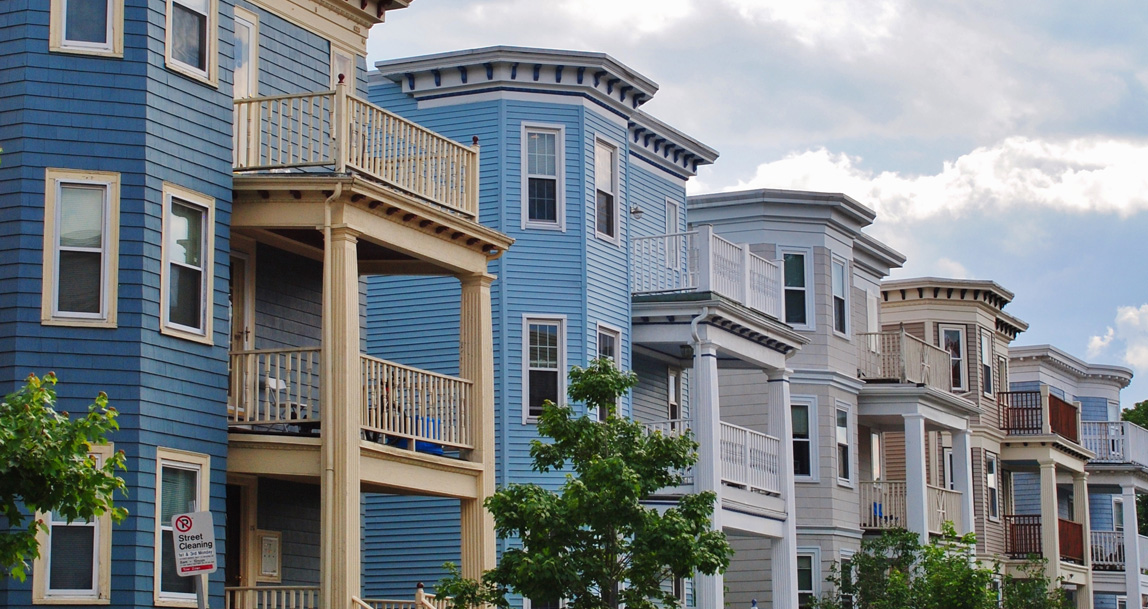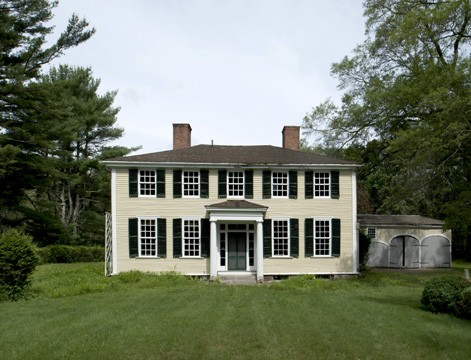Qualifying members get access to expert old-house advice.
Learn MoreWhat is historic preservation? The field of historic preservation is a professional discipline that seeks to preserve, conserve, and protect buildings, objects, and landscapes of historic significance. Historic preservation began as a grassroots movement with dedicated individuals and groups rallying to raise awareness of and protect significant historic sites, usually associated with patriotism. As such, the preservation movement in the United States can be traced as far back as the early nineteenth century. After the Mount Vernon Ladies Association was formed in 1859 to save George Washington’s home, preservation activities became more organized and widespread.
William Sumner Appleton, founder of the Society for the Preservation of New England Antiquities (now known as Historic New England) in 1910, was an early advocate for historic preservation. During Appleton’s lifetime, historic preservation grew from an amateur pastime into a professional and academic field. Today, in addition to the large number of professional preservationists, local preservation and grassroots efforts continue to succeed in protecting and maintaining significant buildings, objects, and landscapes of our collective past.
What is the National Register and how can I get my house listed? The National Register of Historic Places is the United States’ official list of cultural resources worthy of preservation. It is part of a national program to coordinate and support public and private efforts to identify, evaluate, and protect historic resources. It includes buildings, structures, districts, sites, and objects that have been determined to have national, state, or local significance. Resources may be deemed significant based on architectural merit or their associations with historically important events, persons, or important historic trends or patterns.
The National Register is maintained by the National Park Service, but administered on the state level by the State Historic Preservation Office (SHPO) in each state. National Register listing mandates consideration in the planning of federally funded and/or permitted projects and may offer similar consideration at the state level. National Register listing does not protect a historic building from demolition or insensitive alteration. National Register designation does not limit a property owner’s rights, and it may provide some tax and funding incentives for historic preservation. Before a property is deemed National Register eligible, the nomination must be evaluated at the state level. For more information, contact your SHPO or visit the National Park Service’s official National Register website.
How old does a building have to be in order to be considered historic? There is no set date or age requirement that guides historic preservation efforts, and just because a structure is old, does not necessarily make it historic. To be eligible for listing in the National Register of Historic Places, a building must usually be fifty years old, though in some exceptional cases, buildings less than fifty years old have been listed. Most serious preservation efforts also use this fifty-year marker for guiding preservation work including surveying, advocacy, and protection. As resources become older and scarcer, interest in their preservation tends to increase. This means buildings of the recent past (around the fifty-year mark), though significant, are often overlooked. That is why Historic New England advocates for the preservation of the entire spectrum of New England’s residential architectural heritage, including twentieth-century homes such as Colonial Revival capes, Modern houses and neighborhoods, and even post-war Ranch homes.
What are The Secretary of the Interior’s Standards? The Secretary of the Interior’s Standards for the Treatment of Historic Properties were initially written in 1976, revised and expanded in 1983, and revised again in 1990. These non-technical concepts were designed to guide maintenance, repair, and replacement of historic materials, as well as alterations to historic structures and the design of new additions. In short, they were developed to help protect the cultural resources of the United States by promoting consistent preservation practices. Today, the Standards are considered to be the nationally accepted guide for preservation work and have been incorporated into state historic preservation legislation and local preservation ordinances across the country.
There are different standards for four distinct, yet often confused, approaches to the treatment of historic properties: preservation, rehabilitation, restoration, and reconstruction. Preservation is the maintenance and repair of existing historic materials and retention of a property’s form, including changes over time. This method is the most conservative. The rehabilitation approach strives to retain a property’s historic character while acknowledging the need to alter or add to it in order to meet continuing or new uses. Restoration seeks to return a property to a specific period of time in its history and may include removing evidence of other (often later) periods. Finally, reconstruction is the re-creation of demolished or vanished portions of a historic property.
How can I protect and/or save significant historic resources in my community? Coordinating a preservation effort to save a threatened historic resource is a potentially rewarding, often frustrating, and time-consuming affair. The good news is that there is preservation expertise to help guide a local preservation campaign. The not-so-good news is that most preservation successes start and end at the local level. Saving a threatened building cannot be accomplished through a simple phone call, and funds, especially in today’s economic climate, are scarce. Yet every day across the region, community activists, local history buffs, and ordinary residents manage to accomplish inspiring preservation success stories. How do they do this?
The best method for protecting and saving important historic resources is awareness and education. This means identifying and understanding what historic buildings and landscapes exist in your community before there is a whisper or rumor about demolition or other threats. Identification in the preservation field is accomplished through an architectural survey or inventory, where specialized forms are filled out and photos are taken to create a record or database of a community’s historic resources. Your State Historic Preservation Office will have detailed information on what surveys or inventories have been completed in your area and can provide guidance for organizing future survey efforts. Once the historic resources have been identified, educational efforts should be made to instill appreciation and awareness throughout the community. This can be accomplished in a variety of ways, including school programs, lectures, house tours, exhibitions, and local news articles.
When a specific building or other resource is threatened, act quickly. Make sure you and those working with you fully understanding the situation so you can communicate the facts effectively to others. Contact your State Historic Preservation Office and statewide non-profit preservation organization to see what information and assistance they can suggest. They may have specific resources to offer or be able to put you in touch with another group that has expertise. Identify local groups or contacts that have the closest connection to the threatened resource; people who care are most motivated to act. Be sure to encourage open and continuous dialogue among all of the parties involved. Be creative and flexible in brainstorming possible solutions, including those of a temporary nature to buy time for developing more permanent outcomes. An excellent resource on the subject of saving historic properties is the book Buying Time for Heritage: How to Save an Endangered Historic Property by J. Myrick Howard. Most importantly, create a solid plan of action with measurable and realistic outcomes, both for saving the historic resource and determining its viable use in the future.

Every New England state has a designated state agency or office that is responsible for administering federal and state historic preservation programs, the State Historic Preservation Office (SHPO). Staff at each SHPO consist of the State Historic Preservation Officer and various professionals, most either trained in related historic preservation fields (architectural history, archaeology, archives, history, planning) or graduates of historic preservation programs. Every SHPO is responsible for preparing and implementing a statewide historic preservation plan, identifying and nominating historic properties to the National Register of Historic Places, maintaining architectural survey or inventory databases, providing public education and technical assistance, working with local governments to develop local preservation programs, and advising and assisting federal agencies, state agencies, and local governments with historic preservation issues, including issues relating to environmental review, licenses, or permits. SHPOs also administer state historic preservation grant monies, federal and/or state rehabilitation tax programs, and may have many other related responsibilities depending on state government structure.
Connecticut Office on Culture and Tourism
Connecticut Department of Economic and Community Development Office of Culture and Tourism
450 Columbus Boulevard, Suite 5
Hartford, Conn. 06103
860-500-2300
Maine Historic Preservation Commission
55 Capitol Street
65 State House Station
Augusta, Maine 04333
207-287-2132
Massachusetts Historical Commission
220 Morrissey Boulevard
Boston, Mass. 02125
617-727-8470
New Hampshire Division of Historical Resources
19 Pillsbury Street, 2nd Floor
Concord, N.H. 03301
603-271-3483
Rhode Island Historic Preservation and Heritage Commission
Old State House
150 Benefit Street
Providence, R.I. 02903
401-222-2678
Vermont Division for Historic Preservation
1 National Life Drive
Davis Building, Sixth Floor
Montpelier, Vt. 05620
802-828-3540
Every New England state also has a statewide non-profit advocacy organization dedicated to historic preservation. These organizations function as advocates for monitoring, promoting, and coordinating historic preservation efforts at the state level and work closely with their respective State Historic Preservation Offices (SHPO) and local communities.
Connecticut Trust for Historic Preservation
940 Whitney Avenue
Hamden, Conn. 06517
203-562-6312
Maine Preservation
233 West Main Street
Yarmouth, Maine 04096
207-847-3577
Preservation Massachusetts
The Landmark Building
34 Main Street Extension, Suite 401
Plymouth, Mass. 02360
617-723-3383
New Hampshire Preservation Alliance
7 Eagle Square
P.O. Box 268
Concord, N.H. 03302
603-224-2281
Preserve Rhode Island
957 North Main Street
Providence, R.I. 02904
401-272-5101
The Preservation Trust of Vermont
104 Church Street
Burlington, Vt. 05401
802-658-6647

National Organizations:
Local Organizations:
Local preservation commissions are agents of local government and may identify, evaluate, and protect a community’s historic resources. Cooperative planning efforts are often undertaken with other municipal departments or agencies (planning, economic development, conservation commissions) as well as local historical societies and other interested local groups. Call your municipal town offices or SHPO to determine whether your town has a local preservation commission or historic district.
Non-profit local preservation organizations are member-based preservation advocacy, education, membership support, and service organizations that may be active in New England’s larger cities. Local preservation organizations are important sources of support for all kinds of preservation questions, from local political advocacy to technical assistance and programming. We encourage you to support your local preservation organization. Among the non-profit preservation organizations active in New England are the following:
Connecticut:
Massachusetts:
Maine:
Rhode Island:
Vermont:
Modern/Recent Past:
Religious Buildings:
Historic Landscapes/Landscape Preservation and Conservation:
Barns: